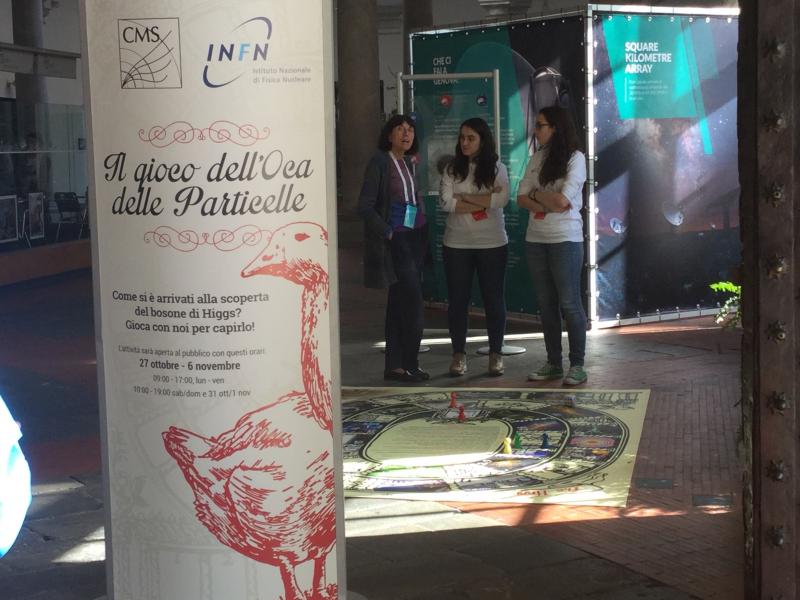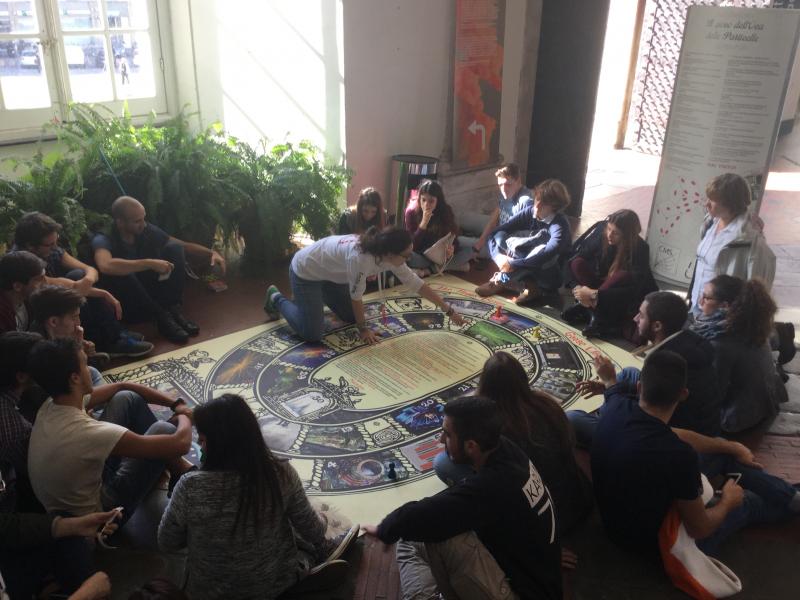The 14th edition of the Festival della Scienza, or “Festival of Science” took place in the Italian city of Genoa from 27 October to 6 November. The event was followed with great interest by the general public, from school children to university students, as well as many individual visitors.
This year’s edition had as many as 280 different events, conducted by nearly 500 young hosts, in 52 different locations, and was visited by over 200,000 guests over the 11 days.
CMS, together with Istituto Nazionale di Fisica Nucleare (INFN), contributed to the Festival with the “Higgs Boson Goose Game”, that was renamed “Gioco dell’Oca delle Particelle” or “Game of the Goose with Particles” for the occasion. The large, “carpet-like” version of the game was on display for the entire duration of the event in the Great Gallery on the ground floor of Palazzo Ducale, attracting adults and students of all ages into its spiral, scientific tale.
The day before the grand opening of the Festival, I met the four young hosts who were in charge of explaining the game and telling the “CMS story from detector integration to the Higgs discovery”. Two of them – Fabio and Beatrice – were physics students and were familiar with concepts as “statistical significance” or “equivalence of energy and mass” even if they weren’t experts in particle physics (Beatrice had even visited CERN with her class). In contrast, Giulia only took one physics class in her Medicine course, and Marcello, who is training to become a teacher, had no previous competence in physics.

Initially, the two non-physicist hosts were rather scared by what appeared to be quite a tough task: passing highly scientific content to people with no specific knowledge, aged 8 to 99! Marcello even considered giving up. However, pairing a physicist with a non-physicist turned out to be very productive! For instance, when dealing with children, Marcello would get them seated and explain the rules and start the game as a fairy tale, after which one of the physicists would take over and approach the scientific content of each stage of the game.
The visits were organised through a booking procedure that allowed one full hour for each group. Participants were grouped in five teams matching the five different colours of the game pieces. On average the achieved involvement was such that the final victory of a team would trigger burst of shouts, laughs and exclamations. The winning teams were awarded a “diploma”, featuring the last square of the game: the CMS four-lepton mass plot that marked the Higgs boson’s discovery in 2012!
Eight visits per day were scheduled for the 11 days of the festival and all of them were booked on the very first day. The vast majority of the over 1000 visitors enjoyed playing; all adults, and teachers in particular, congratulated the organisers. We also hope that the activity sparked a genuine interest in particle physics in many of the participants.
The views expressed in CMS blogs are personal views of the author and do not necessarily represent official views of the CMS collaboration.

